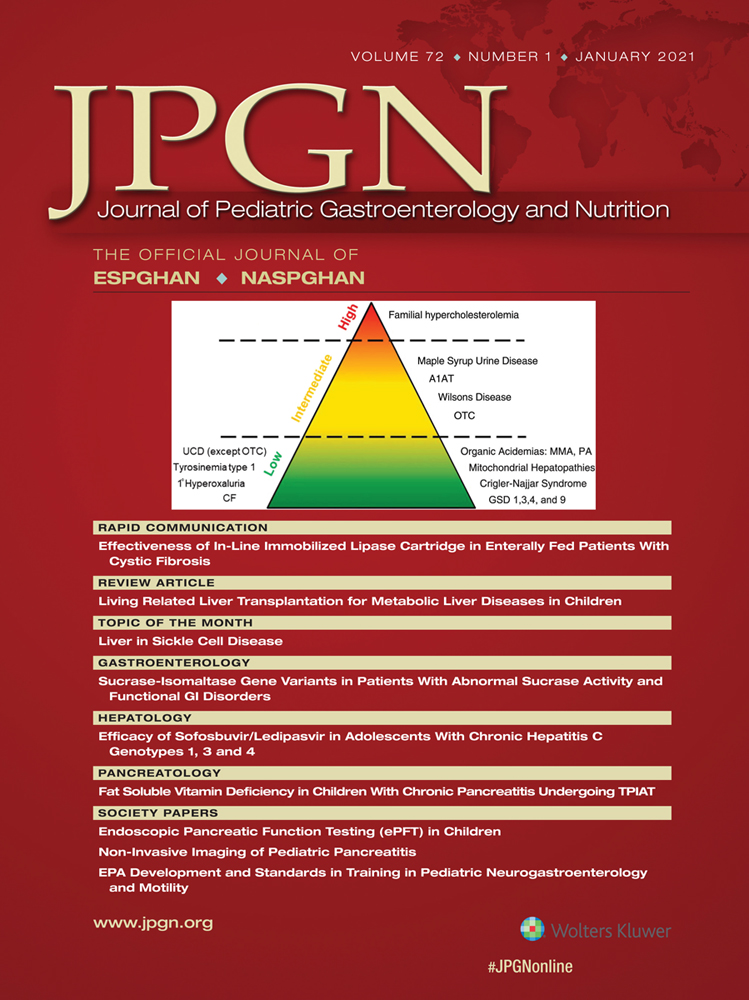Fat-soluble Vitamin Deficiency is Common in Children With Chronic Pancreatitis Undergoing Total Pancreatectomy With Islet Autotransplantation
K.R.M. is supported by T32DK108733. M.D.B. is supported by R01DK109124.
The authors report no conflicts of interest.
ABSTRACT
The prevalence of fat-soluble vitamin (FSV) deficiency in children undergoing total pancreatectomy with islet autotransplantation (TPIAT) for chronic pancreatitis (CP) is unknown. We quantified FSV deficiency in 100 children (age ≤18) undergoing TPIAT. FSV levels (vitamins A, E, D) and clinical history were abstracted from medical records. Vitamin A was low in 4% before and 7% at 1 year after TPIAT, vitamin E in 17% and 18%, and vitamin D in 22% and 24%, respectively, regardless of pancreatic enzyme or vitamin supplement dosing. Longer duration of CP was associated with pre-TPIAT vitamin D insufficiency (P = 0.0002). This remained significant in a multivariate regression model (adjusted P = 0.01). On multivariate analysis, there were no significant predictors of low FSV levels post-TPIAT. FSV deficiencies are common among children undergoing TPIAT and patients who have had longer disease duration may be at increased risk. All children should be monitored for FSV deficiency after TPIAT.




